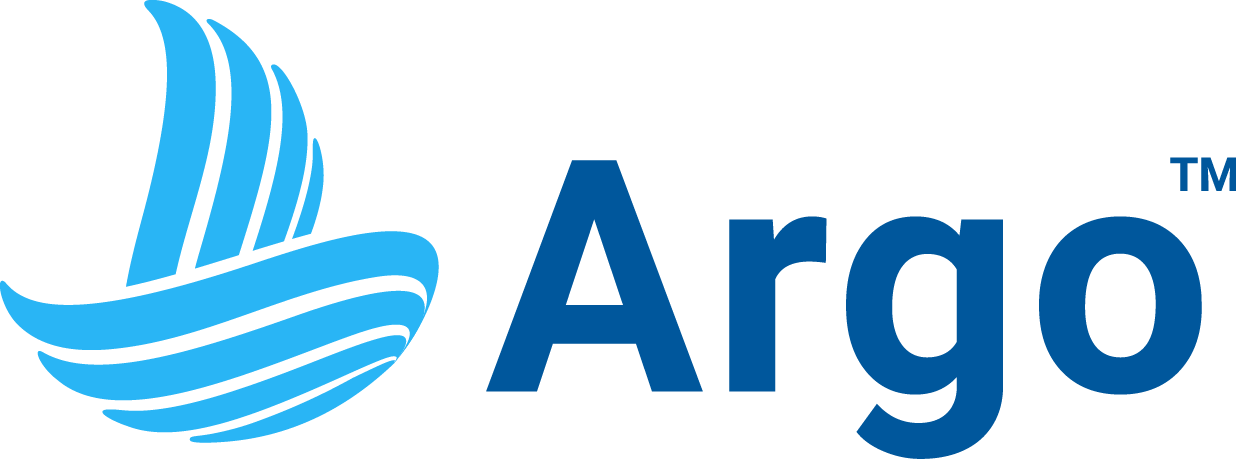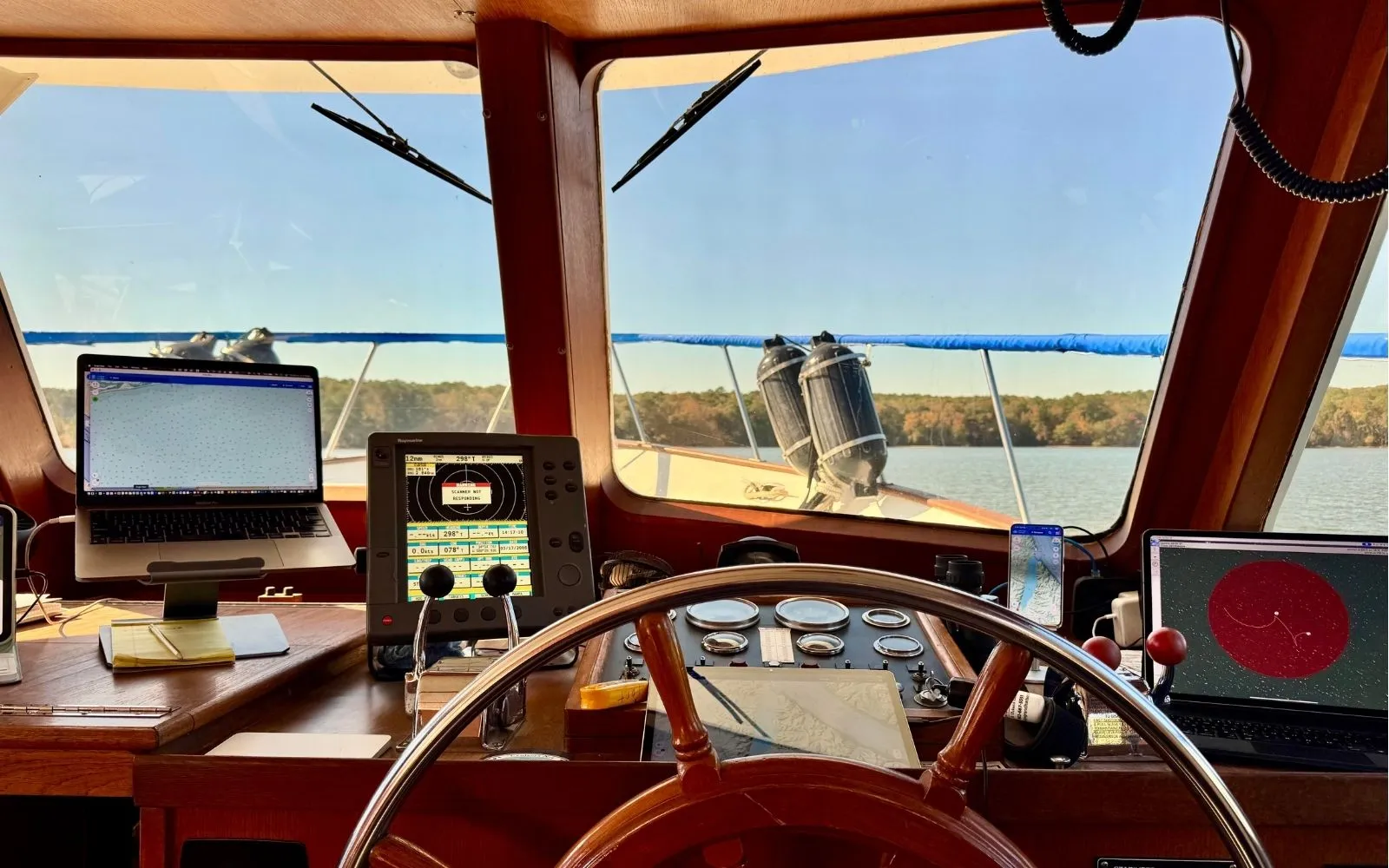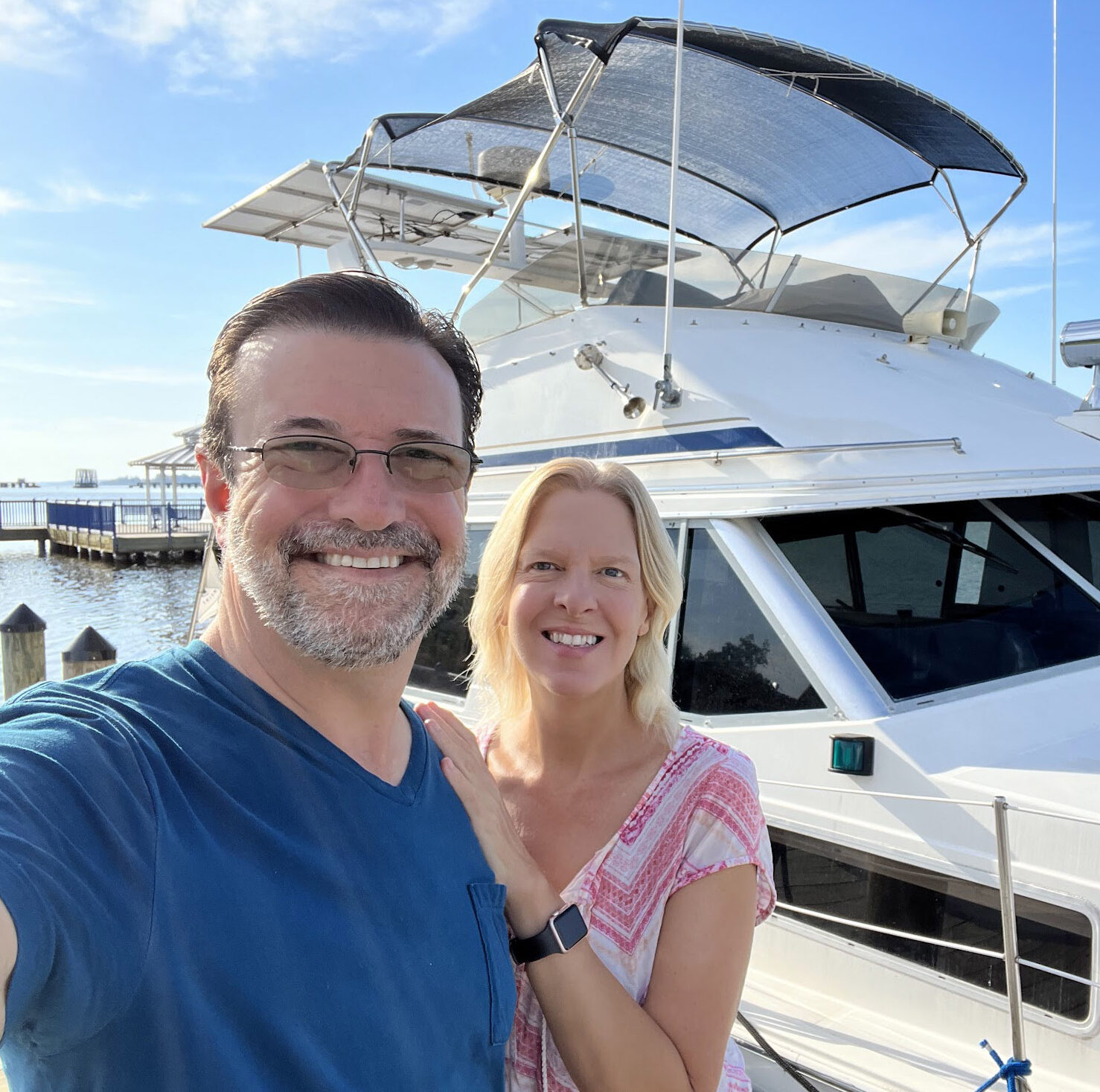Cruising full-time in 2025 means dealing with a boat full of electronics. On my 1982 DeFever 44 Offshore Cruiser, some are quite old, some are very new—some play together well, while others don’t.
Recently, I needed a NMEA gateway aboard for testing Argo’s new NMEA capabilities (NMEA 0183 functionality with AIS pass-through is in beta now). I picked one up without knowing how important the choice would be. After all, most NMEA gateways cost around $250–$300 and are essentially functionally similar. Without getting too deep into the details, I settled on the one that seemed to bring the most to the table, and now I’m glad I did.
When we were finally underway and far from safe harbor, all of my navigation electronics suddenly lost their GPS signal. Most frighteningly, the emergency DSC button on my VHF was no longer the reassuring safety net it should have been, since it had no location to report.
What saved me wasn’t my new AIS or VHF, and it certainly wasn’t the decades-old SeaTalk1 wiring I’d been relying on. It was my new PredictWind DataHub.
The Issues
The boat is new to us—we just bought it in June and spent two months preparing it to be our new paradise on the water. The installed electronics suite was a 20-year-old Raymarine system that our budget wasn’t ready to replace, so I needed to make it work. That meant getting the legacy SeaTalk1 gear to communicate with the newer NMEA 2000 (N2K) gear I was adding. First, I needed to translate between SeaTalk1 and SeaTalk ng, then convert that to connect to my new N2K backbone, along with a new AIS transceiver and VHF. All of this was connected so that my new PredictWind DataHub would have a couple of dependable “friends” on the network. While we were in the slip, everything worked great, but once we got underway and the boat started bouncing around a bit, things started to change. On our second morning underway, we lost GPS entirely. The chartplotters, instruments, VHF, and even Argo were suddenly blind to our location.
The AIS does have a GPS receiver, and I was surprised it didn’t kick in to bridge the gap, but here’s the catch: by default on N2K, our chosen AIS only puts out proprietary GPS data. That meant my other gear couldn’t use it. There was no redundancy and no fallback.
The Diagnosis
PredictWind DataHub to the rescue: using its NMEA probe and logging tools, I could see in real time which devices were sharing their position, which weren’t, and how it was being shared (usable to other devices or not). This made it crystal clear: my AIS wasn’t providing usable position data. Pro Tip: Squinting at NMEA data logs is not part of my daily routine, so I used Google Gemini to quickly pinpoint the issue in the logs. It would’ve taken me an hour or two to find the needle in the haystack that AI found in 3 seconds flat.
Without the DataHub’s probe and logging tools, I’d have been guessing. Instead, I had hard data. I knew that the network was correctly wired and functioning within expected parameters. I also knew what devices on the network were saying to each other and, more importantly, what they weren’t.
The Fix
The DataHub isn’t just a passive interface or logger/debugger. It has its own GPS receiver and can broadcast that GPS position back over the N2K backbone. I flipped on the “GPS-to-N2K” function—and just like that, every device on board had a valid position again. I was simply amazed the fix was so simple.
It took me some time and three toasted fuses (thanks to a legacy, open-frame fuse panel—there’s a reason the ABYC requires positive terminal protection) to arrive at the solution, but the actual fix was one click in a web browser. That’s what makes the DataHub such a powerful tool: it’s the Swiss Army Knife you don’t know you need until you do—then it’s invaluable!
Beyond My Use Case
The features I used “in the moment” were just one facet of the DataHub. It’s designed to scale from everyday reliability as a NMEA gateway to advanced offshore capability and even handles multiple internet connections to provide seamless failover. As part of my diligence in integrating the DataHub with Argo, I’ll also be trying out PredictWind’s new Anchor Alert app which ties directly into the DataHub and adds anchor monitoring to the same platform that’s already keeping my network stable.
Core Features / No Subscription Required
- GPS redundancy (the lifesaver in my case)
- NMEA 2000 ↔︎ NMEA 0183 bridging over Wi-Fi
- NMEA probe and logging tools for troubleshooting
- Multi-WAN router functionality, letting you connect multiple WAN connections, including local (marina) WiFi, Ethernet, Starlink, and even USB cellphone tethering with automatic, prioritized failover
- Whale watch reporting and AToN overlays (public service features, especially useful for protecting Right Whales)
- AIS data sharing with aggregators like MarineTraffic
- Remote access to your DataHub from shore
Advanced / Subscription Features
- Continuous GPS tracking with a public PredictWind webpage for friends and family
- Over-the-Horizon AIS
- Anchor monitoring and alerting via the PredictWind Anchor App
The distinction matters: the DataHub is immediately useful right out of the box, but it also grows into a full offshore and connected-cruising platform if you add a PredictWind subscription. Many of the advanced features require a subscription, which is something to keep in mind (worth it!).

What Sets the DataHub Apart?
While many NMEA gateways handle the basic translation of data from your boat’s instruments to a Wi-Fi or Ethernet network, the DataHub is different. It’s not just a translator; it’s a complete communications and data management hub designed for the modern cruiser.
Here’s what makes it stand out from typical NMEA gateways:
- Integrated GPS Receiver with Failover: Most gateways simply rebroadcast data they receive. The DataHub has its own internal GPS receiver. As my experience showed, if the GPS signal from your primary instruments is lost, the DataHub can instantly become the new GPS source for your entire N2K network. This built-in redundancy is a critical safety feature that few, if any, other gateways offer.
- Multi-WAN Router Functionality: The DataHub is a powerful router that can manage multiple internet connections simultaneously in a manner similar to what you might see in expensive, purpose-built routers from the likes of Peplink or similar, high-zoot networking hardware makers. It can seamlessly and automatically switch between marina Wi-Fi, a Starlink connection, Ethernet WAN sources, and/or a USB-tethered phone, making sure you always have internet when you need it. This intelligent network management is a core feature, not an afterthought.
- NMEA Logging and Diagnostics Tools: The ability to log NMEA data and probe the network in real-time is a powerful troubleshooting tool. Other gateways may have a basic status screen, but the DataHub’s detailed logging and analysis capabilities (especially when combined with AI for quick diagnosis) are what allowed me to pinpoint the exact problem.
- PredictWind Ecosystem Integration: The DataHub is the central nervous system for the PredictWind platform. This unlocks features that go far beyond a standard gateway, such as:
- Over-the-Horizon AIS: Instead of relying solely on your local VHF reception, the DataHub can download AIS data for vessels up to 300 miles away using an internet connection. This provides a critical safety buffer, especially in high-traffic areas.
- Automated GPS Tracking & Blogging: It can automatically update your public PredictWind tracking page for friends and family, even storing position reports when offline and uploading them once a connection is re-established.
- Remote Monitoring: You can access your boat’s real-time instrument data from anywhere with an internet connection. This is a game-changer for peace of mind.
While a simple NMEA gateway might cost a bit less, the DataHub’s combination of a built-in GPS, multi-WAN router, and deep integration with the PredictWind ecosystem makes it a far more powerful and reliable piece of gear for anyone serious about cruising.
Serendipitous PredictWind Offer for Argo Users
PredictWind learned that Argo was releasing NMEA support and responded by offering us a special promotion—just for Argo users—on their DataHub hardware and services. This helps us get NMEA-based, safety-enhancing technology aboard more boats. Here’s their offer:
- DataHub hardware including N2K cable and tee: $199 (a $149 reduction from the retail price of $299 + $49)
- Pro Services: 1 month of PredictWind Pro service included, equivalent to $83 in savings prorated from a 3-month subscription. Pro services normally sell for $249/3 months or $499/year. No credit card required.
Promotion available until November 16, 2025. Click the links above to sign up/purchase.
This provides an affordable, low-risk way to get started with a tool that’s immediately useful and can expand to full offshore capability.
Final Thoughts
The PredictWind DataHub saved my bacon—not once, but twice in one day! First it showed me why my AIS couldn’t step in, and then it seamlessly stepped in to be the GPS source my network needed. Next time I drop the hook, it will also be part of my anchor-watch safety net.
If you’re cruising with a mix of old and new gear, it’s hard to overstate the value of having a tool that can step in as a router, logger, GPS, and bridge/gateway all at once.
For me, the DataHub turned what could have been a very bad day in the middle of Lake Michigan into a story worth blogging about. I’ve only just started to scratch the surface of how this amazing tool is improving my life Aboard Stinkpot, but every new development to the platform seems to sweeten the pot.




